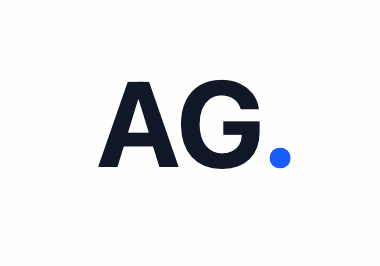From Skeptic to "@claude review this PR": My AI Integration Journey
A lot of the work that myself and my team does nowadays looks like this... How casual AI integration became the new normal in our development workflow.

A lot of the work that myself and my team does nowadays looks like this...

Just two years ago, if you'd shown me this image and told me I'd be casually tagging an AI to review my team's code, I would have laughed. Not because the technology seemed impossible, but because it felt so fundamentally different from how we'd always done things.
Yet here we are. And what's amazing isn't just that this works - it's how natural it's become.
Did you want to help me grow my audience? Sign up to my newsletter. It's free!
The Evolution of a Skeptical CTO
In my previous post about the great AI divide, I wrote about my journey from AI skeptic to advocate. What I didn't fully capture was how this transformation would play out in the day-to-day reality of leading a technology team.
The screenshot above represents more than just a code review. It's evidence of a fundamental shift in how we approach software development, problem-solving, and team collaboration.
When I first committed to working with AI tools daily, it was a pragmatic decision - I needed to understand the technology to make informed decisions about it. What I didn’t expect? How fast it’d become something we can’t really imagine working without.
AI as Team Member
That little “@claude review this PR” comment? It says a lot. Around here, Claude’s just part of the team now. Not some flashy new tool. Just another teammate we loop in when we want a second set of eyes. I've suggested in one of our strategy meetings that we should refer to AI as we do with any other team members, they should have a name and a certainly a personality.
Claude doesn't get offended when we ignore its suggestions. It doesn't take coffee breaks or have bad days. It doesn't play politics or worry about job security. It just consistently provides thoughtful analysis when asked.
But here's what's most interesting: This integration happened organically. We just kept tinkering. Trying stuff. And pretty soon it was obvious - so much of what was eating our time didn’t really need to. These mundane, repetitive activities - code reviews for syntax errors, pattern recognition, initial analysis - were exactly the kind of work humans shouldn't be doing anyway. AI handles them naturally, freeing our team to focus on what actually requires human insight.
Practical AI Integration
This is what responsible AI adoption actually looks like in practice. It's not about replacing human developers - it's about augmenting our capabilities and streamlining our processes. This is the part I really care about.
Our team still makes all the critical decisions. We still handle complex architectural choices, navigate business requirements, and solve problems that require deep contextual understanding. But we've offloaded the routine analysis, pattern recognition and initial review work to AI.
The result? We spend more time on high-value activities like strategic thinking, creative problem-solving and building relationships with stakeholders. The AI handles the grunt work that used to consume hours of our day.
The business reality
My view on the business reality is simple: the "@claude review this PR" interaction represents a 30-minute task (sometimes even more) completed in 3 minutes. Multiply that across dozens of daily interactions, and you're looking at significant productivity gains.
As I mentioned in my previous post, we're already seeing workforce reductions across the tech industry. But companies that figure out how to augment their teams rather than simply cutting them are the ones building sustainable competitive advantages.
Our development team has more productive days than before, but it's not a consistent productivity boost across every task. Some days AI accelerates everything beautifully, other days it creates more friction than value. Still, we've gained capacity for more ambitious projects during those good AI days.
The Human Element Remains Critical
What the screenshot doesn't show is everything that happens around that AI interaction. The strategic decisions about what to build, the conversations with clients about requirements, the architectural discussions that shape our solutions, the many whiteboard sessions we have - these remain entirely human-driven.
AI helps us execute faster and more accurately, but it doesn't replace the judgment, creativity, and relationship-building that define effective technology leadership.
A Few Thoughts for Fellow CTOs
Still unsure about bringing AI into your workflow? Totally get it - I was too.
Start with the below and see how it goes:
Start small. Don’t try to “AI-ify” your whole org in one go. Pick one thing - something low-risk but annoying - and let AI prove itself.
Focus on augmentation, not replacement. The goal isn't to eliminate human involvement but to elevate it to higher-value activities.
Let the team lead. The best ideas haven’t come from top-down initiatives. They’ve come from devs trying things out, seeing value and spreading the word organically.
Measure what matters. Track quality improvements and productivity gains, not just time savings. The real value comes from doing better work, not just faster work.
The Bigger Picture
That "@claude review this PR" represents something larger than a workflow optimisation. It's evidence that the most effective AI adoption isn't dramatic disruption - it's thoughtful integration that happens so naturally we barely notice it. The transformation is already happening. The question isn't whether to embrace it, but how to do so in ways that enhance rather than diminish human potential.
What does AI integration look like in your development workflow? I'd love to hear about your experiences - both the successes and the stumbles.
